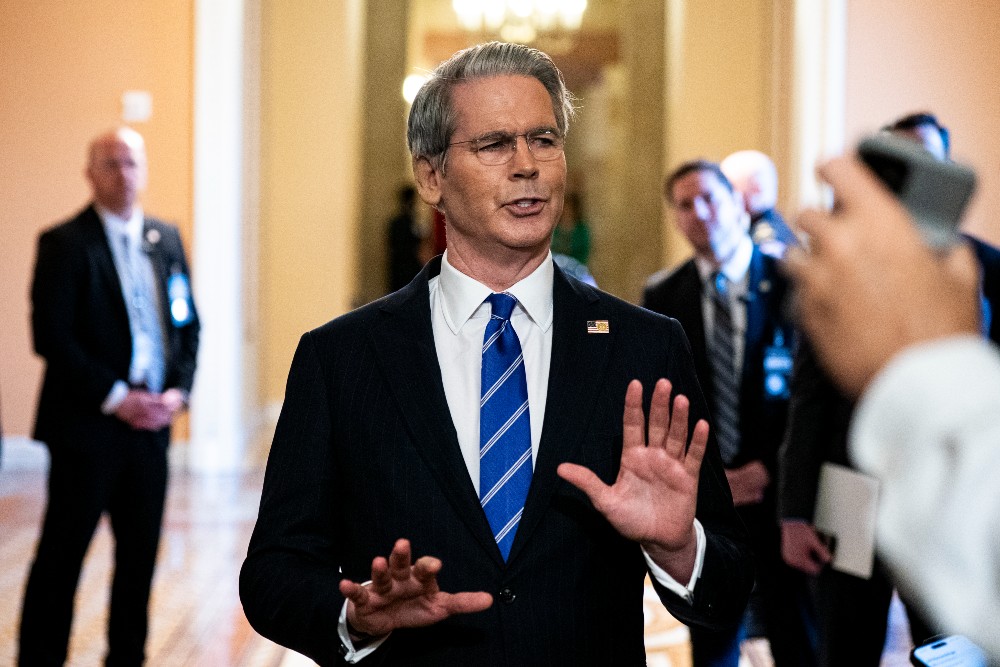Treasury Secretary Scott Bessent hit out at the nation’s and apparel sector for questioning the administration’s trade strategy and its impact on business.
During a segment on CNBC on Thursday, Bessent, in an attempt to defend the recent trade deal with Vietnam that will result in a new, 20-percent duty rate, said that U.S. businesses have already adjusted to the 10-percent universal baseline tariff levied by Trump in April. “We’ll see what happens with the additional 10 [percent] but thus far, we haven’t seen any inflation from tariffs,” he said.
But the Footwear Distributors and Retailers of America’s (FDRA) believes that the double-digit duty hike will bring higher costs for both shoppers and U.S. brands and retailers sourcing in Vietnam—a slap in the face after the president urged companies for years to diversify away from China.
When asked about the comments, Bessent suggested that Vietnam’s manufacturers should bear the brunt of the added duties if they “want to keep market share.” He accused the country of perpetuating rampant transshipment, or allowing China-made goods to circumvent trade laws and make their way into the U.S. market illicitly—a practice which will now result in a 40-percent punitive duty.
He also suggested that maybe American brands and retailers should simply accept any hit to their margins the tariffs might cause rather than raise prices for consumers.
“I think many of the apparel companies, their margins became abnormally high during Covid,” he said. “So maybe one thought is we’ll see a normalization there.” The secretary vehemently denied that added duties result in inflation, saying that consumers “could get a one-time price bump, but in terms of a generalized economic inflation, I don’t think that tariffs caused that.”
FDRA president and CEO Matt Priest took issue with many of the secretary’s comments, saying that if consumers haven’t felt the impacts of inflation yet, they’re sure to in the coming months as the impacts of the duties play out.
“Inflation is coming. The main brands sourcing out of Vietnam have all said publicly they’re raising prices because of the tariffs,” he said.
“The administration came into office declaring that prices would go down on January 20, just by the mere fact that the President was re-elected,” Priest added. “And we pushed back on that because we knew that the policy implications of higher tariffs meant that there would be inflationary activity in the supply chain, which would impact our consumers, and that would be the antithesis of the commitment made by the president and his team.”
Priest also took umbrage with the administration’s accusations regarding unbridled transshipment, saying that the “illegal” and “fraudulent” practice is different than Vietnamese producers utilizing China-originating materials and components to create products for the American market. The Asian footwear and apparel supply chains are deeply integrated, and many companies are reliant on China for certain inputs.
“And in fact, if you look at domestic production for in the United States, guess where they get their materials? China,” Priest said. “They’re really barking up a tree that I think is going to make it difficult for shoe companies to continue to source in Vietnam,” and that could play right into China’s hands. If content rules for Vietnam-made products are too “onerous,” companies could simply opt to keep their supply chains in China—especially if they’d pay high duties in either country.
Vietnam’s producers are also unlikely to bear the brunt of the tariff increases, and with the duty rate rising above 10 percent (a rate FDRA hoped wouldn’t be surpassed) it will be harder to spread out the added costs.
“And as you get north of 10 [percent], that impact will be more difficult” to parse, he said. “I think a larger share of that shifts to the consumer away from the producer because [producers] can only deal with it for so long and so much before they decide, ‘I can’t even afford to do this.’”
U.S. footwear firms are stuck between a rock and a hard place, Priest said, because they don’t yet have a full picture of the trade landscape. “We don’t know where Cambodia will land, where Indonesia will land, and so if you’re a sourcing manager for a company, your matrix is all messed up.”
Priest said the trade association had spoken with a number of its members over the past 24 hours and encouraged them not to make any decisions about sourcing until a more detailed plan is released by the administration.
In addition to fretting over their supply chains, footwear brands are contending with a consumer that is “pretty spooked” by the economic environment. “Right now, sales are down, foot traffic’s down. Consumers are really kind of clenching and holding onto their pocketbooks,” he said.
As these firms look for a path forward that preserves their margins amid tariff increases, they’re not eager to go down a road that might alienate shoppers further.
“We know that when you increase prices, that will drive down even more consumer activity, so our companies are trying to deal with as best they can,” Priest said. “As we head into back to school in full force in July and early August, and then as we head into the holidays, we’ll see price increases. It won’t be on everything; it won’t be on every SKU and every type of shoe, but I think it will be broad-based enough for the consumer will feel it.”


